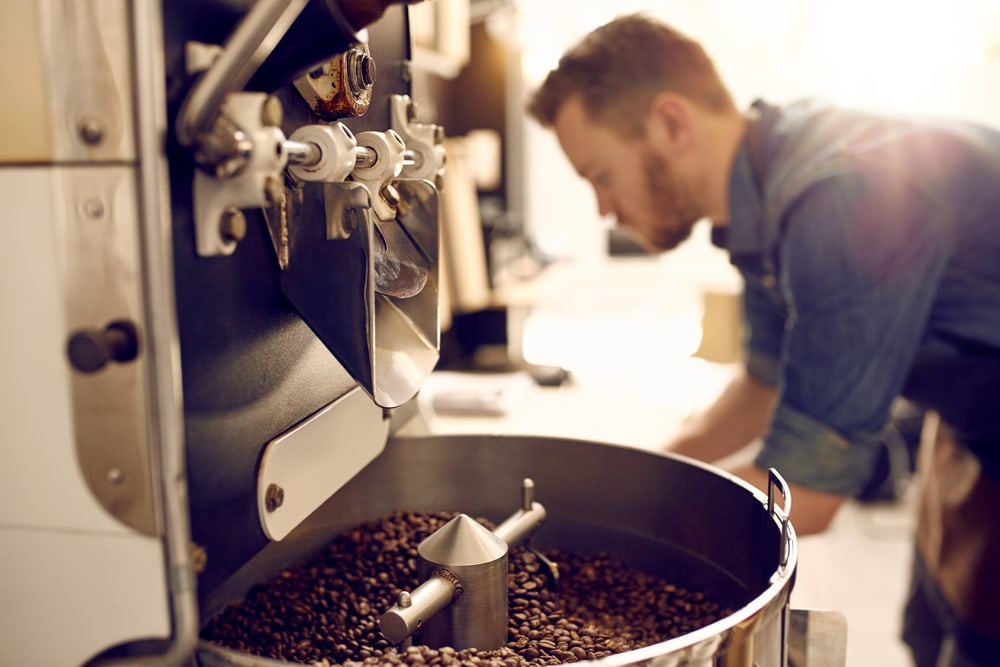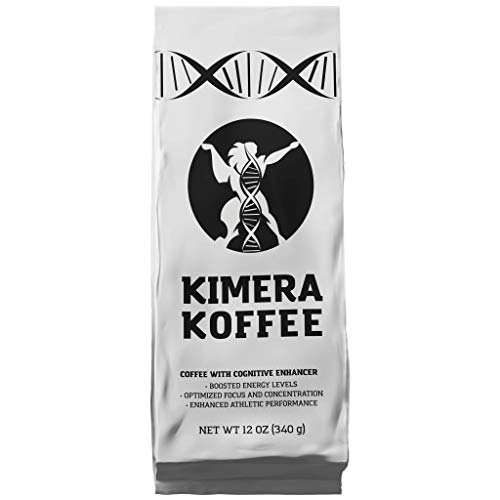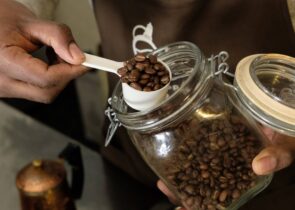When you sip coffee, you might wonder: “where does this come from, anyway?” The answer is probably the Dominican Republic.
This is a country rich with culture, beautiful landscape, unique traditions, and rich farmland. Globally, it has left a strong influence on the coffee industry. As a result, it’s also one of the most well-known coffee producers in the world.
At a Glance: Best Dominican Republic Coffee

Quick Summary: Best Dominican Republic Coffee
 | Our Top Choice
Cafe Santo Domingo
| Check on Amazon → |
 | Kimera Koffee Original Roast | Check on Amazon → |
 | Volcanica Coffee Company: Dominican Coffee | Check on Amazon → |
| No products found. | Fresh Roasted Coffee: Dominican Republic K-Cups | Check on Amazon → |
 | Kimera Koffee Phase 1 Peaberry: Dominican Republic Coffee | Check on Amazon → |
Dominican Republic Run-Down
The Dominican Republic is located in the Carribean on the island of Hispaniola. Sharing its western border with Haiti, the country has an estimated population of about 10,300,000 people. It’s also been cultivating coffee for the last 300 years.
Introduced to the island in 1715 by Spanish colonists, coffee started becoming a popular crop for many local farmers. Eventually, it evolved into a national obsession. However, coffee did not begin to be largely commercially exported until 1872.
The tropical and mountainous landscape of the Dominican Republic makes it the perfect environment to cultivate coffee beans.
As a result of the elevation, most beans are grown between 2,000 and 5,000 feet because the higher up the elevation, the harsher the growing conditions are. Due to these harsh growing conditions, the plants take longer to grow and therefore have more time to develop more complex and flavorful sugars.
Coffee Production Reputation
Nowadays, the coffee produced in the Dominican Republic is considered some of the best in the world. Though both arabica and robusta beans are grown here, arabica beans are produced more.
Farmers harvest coffee beans normally from September to May. As a result, the country exports around 350,000-500,000 bags of coffee beans per year. Likewise, the Dominican is internationally ranked as 31st in the world for coffee exports. However, a majority of the coffee grown there is consumed by the country’s residents.
Ultimately, the Dominican Republic has several different coffee growing regions.
However, there are 6 where coffee is cultivated on a large scale throughout the year. These regions are Cibao, Baní, Azua, Ocoa, Barahona, and Juncalito.
As a result, these regions have also been recognized and denominated by the government to preserve the different coffee growing regions and the flavor profiles associated with each.
Furthermore, where coffee processing is concerned, all coffee that is cultivated in the Dominican Republic undergoes the wet process. After the beans are collected, they are pulped by a machine, and then the coffee cherries are fermented in water for about 1-2 days. The wet-processing method is the most common and produces the highest quality coffee.
Coffee Growing Regions
When purchasing coffee from the Dominican Republic, often the bag should tell you what region the beans are produced in. Due to this, here’s a quick breakdown of these different regions and the differences between them.
Cibao Valley
Cibao is located in the northern part of the country. Normally, it is full-bodied with hints of nuttiness and earthiness. In addition to this, it’s also low in acidity. Located in the northern part of the Dominican Republic, this valley is high in elevation, making it an ideal location to cultivate coffee plants.
Baní
Located in the southern region of the country, this region is a primary area of commercial manufacturing and exporting region of bananas and coffee. Baní gets a significant amount of rainfall, keeping the soil enriched, moist, and extremely fertile.
Azua
This region is located in the southern part of the country, and the primary crops grown here are sugar, tobacco, and of course, coffee. Fertile mountainous regions surround Azua to produce healthy coffee crops and savory coffee beans.
San Jose de Ocoa
Also located in the southern part of the country, coffee grown in this area of the Dominican Republic is known to be very robust in flavor. Its average temperature during the cultivation months is around the mid-high 90s, making it a perfect location to grow coffee.
Barahona
The Barahona region is located in the southwestern part of the country. Barahona is considered to make some of the highest quality coffee in the Dominican Republic. Temperatures here remain steady throughout the year, producing coffee that’s notable for its rich flavor and acidity.
Juncalito
The Juncalito area is located in the middle of the continent and has a pleasant climate while residing in a mountainous landscape. Farmers normally grow coffee at higher elevations like this to encourage flavor profiling. Juncalito is reputable for creating flavor profiles consisting of hints of fruitiness from tropical fruits that can be found in the area.
Recommended Brands
With so many different regions for growing coffee, there’s also a wide variety of blends and brands that come from this spectacular country. However, we’ve collected information about some of the most flavorful, reputable, and consistent coffee brands and blends that you can enjoy.
Cafe Santo Domingo
Farmers harvest beans from the areas of Cibao and Barahona, as well as other regions like Neyba, Sierra Sur, and Noroeste, Cafe Santo Domingo produces blends that are full-bodied, well-balanced, and full of flavor. Moreover, most of their coffees have notes of nuttiness, as well as hints of chocolate and berries.
Kimera Koffee Original Roast
Brewers add extra essential vitamins to this blend in addition to the caffeine already present. This gives you that extra kick to jump-start your day. Dominican farmers grow and cultivate these organic coffee beans on Dominican soil only. Furthermore, they are roasted to increase brain function, athletic ability, and boost energy levels overall.
Volcanica Coffee Company: Dominican Coffee
Coming from the Jarabacoa region of the country, Volcanica’s Dominican blend uses 100% arabica beans. Likewise, it’s medium blend and is well-balanced in flavor. It’s also balanced in caffeine content, and is easy on the acidity. All of Volcanica’s beans are harvested from crops planted at 3,000 feet or higher. This ensures that you receive the most robust and savory coffee beans.
Fresh Roasted Coffee: Dominican Republic K-Cups
Fan of Keurigs? These boldly flavored K-cups will quickly become a favorite blend to brew all day, every day. Furthermore, they package their beans almost immediately after roasting, making sure to preserve both flavor and freshness. Not only do they care about quality coffee, but they also care about the environment. Fresh Roasted has eliminated its carbon footprint by 80% and roasts coffee with the most environmentally-friendly technology available.
No products found.
Kimera Koffee Phase 1 Peaberry: Dominican Republic Coffee
Possessing hints of chocolate and a silky-smooth finish, this coffee by Phase 1 is grown in the higher altitudes in the Jarabacoa region. Furthermore, Phase 1 is explicitly peaberry coffee beans. This makes it one of the rarest Dominican Republic blends you’ll be able to find.
Traditional Dominican Coffee
Many individuals in the Dominican are coffee lovers already. Due to this, most have their own practices of drinking it. Therefore, coffee drinkers in the Dominican rarely ever drink their coffee completely black. Drinkers enjoy Dominican coffee when its sweeter in flavor. Farmers in the Dominican harvest mass amounts of sugar, as well as coffee. Brewers normally blend coffee and sugar together to give it a sweeter flavor.
Due to this, Dominicans will drink coffee morning, afternoon, and in the evenings. Above all, locals enjoy this special sweet treat no matter what time it is.
Wrapping Up
Ultimately, coffee from the Dominican Republic is almost always going to be enjoyable to drink. Therefore, with so many rich and fertile growing landscapes to choose from, the blends and brews to choose from are endless. So pick a brew, try it out, and enjoy!
Happy caffeinating!











